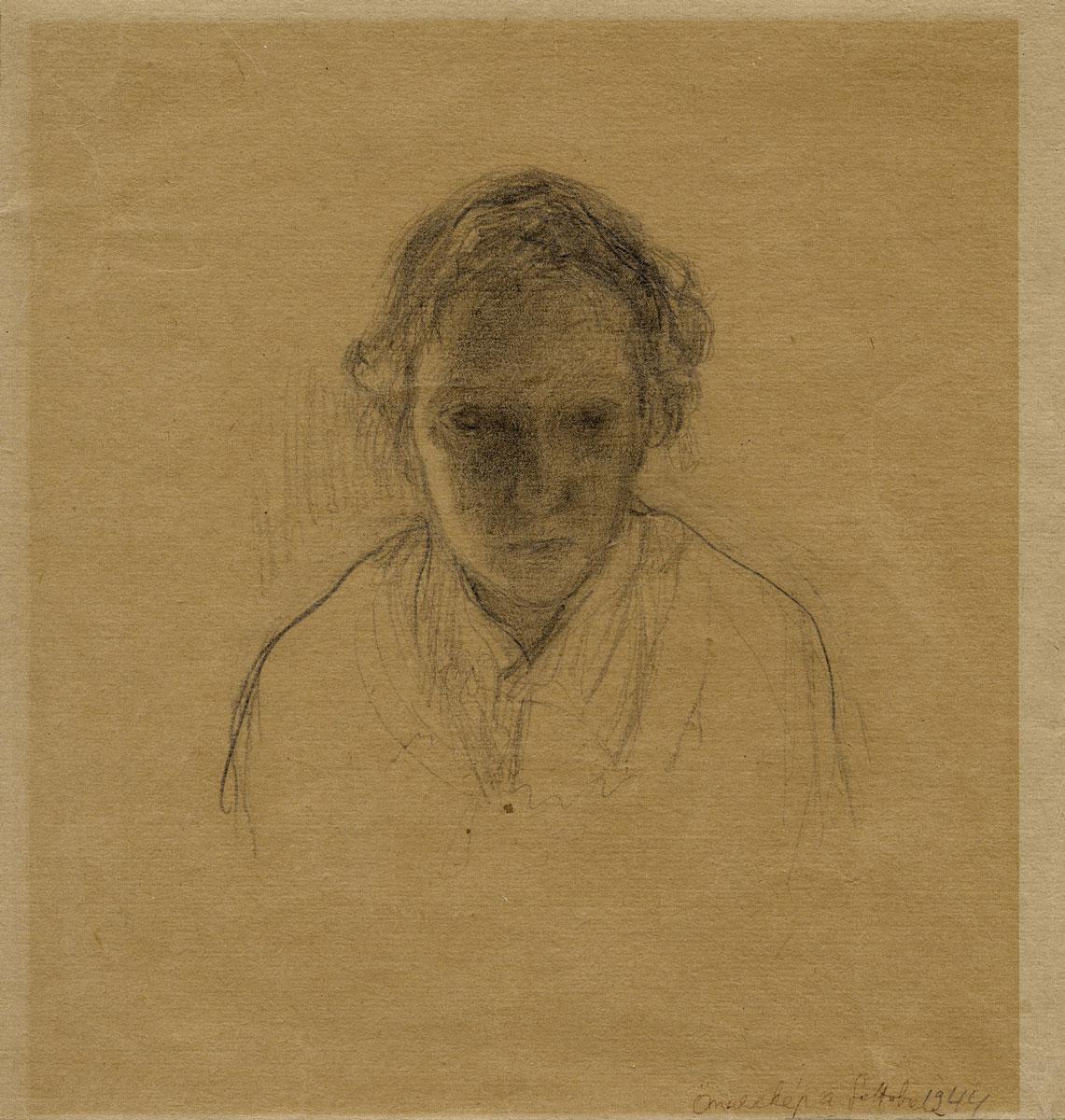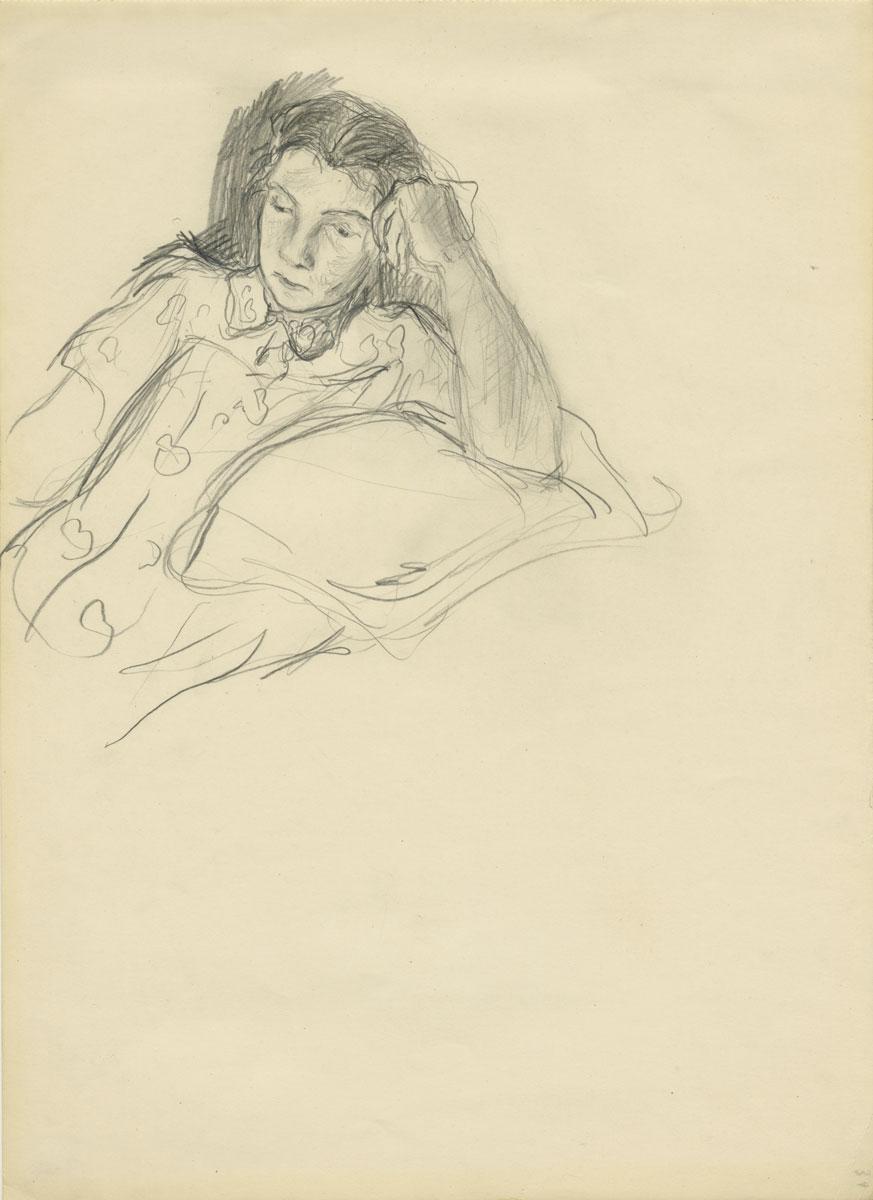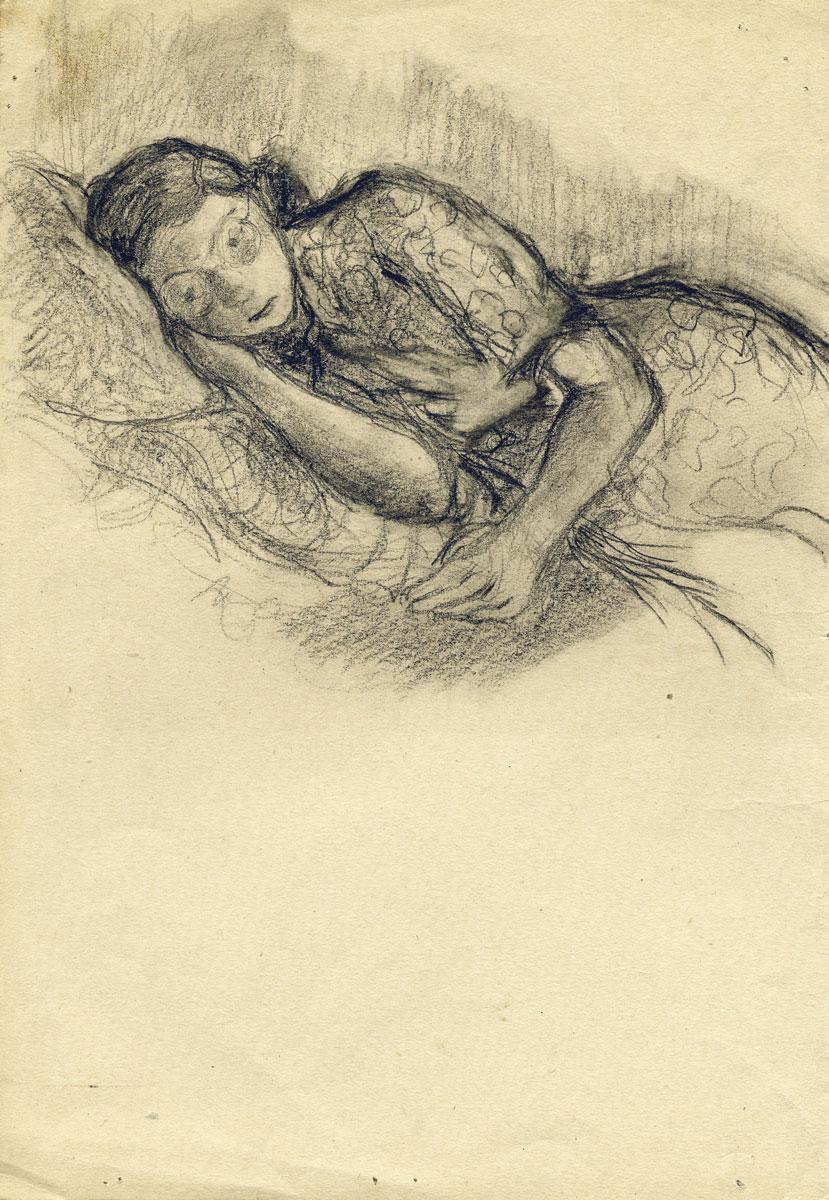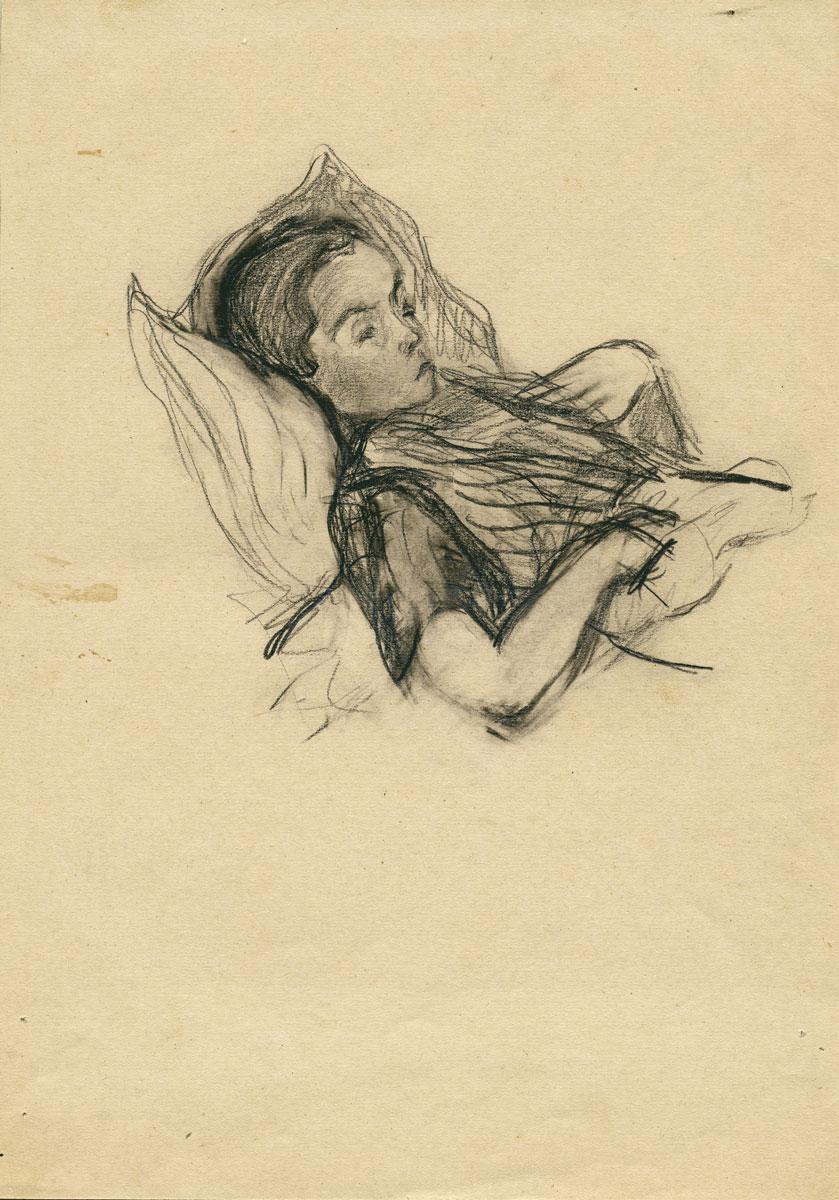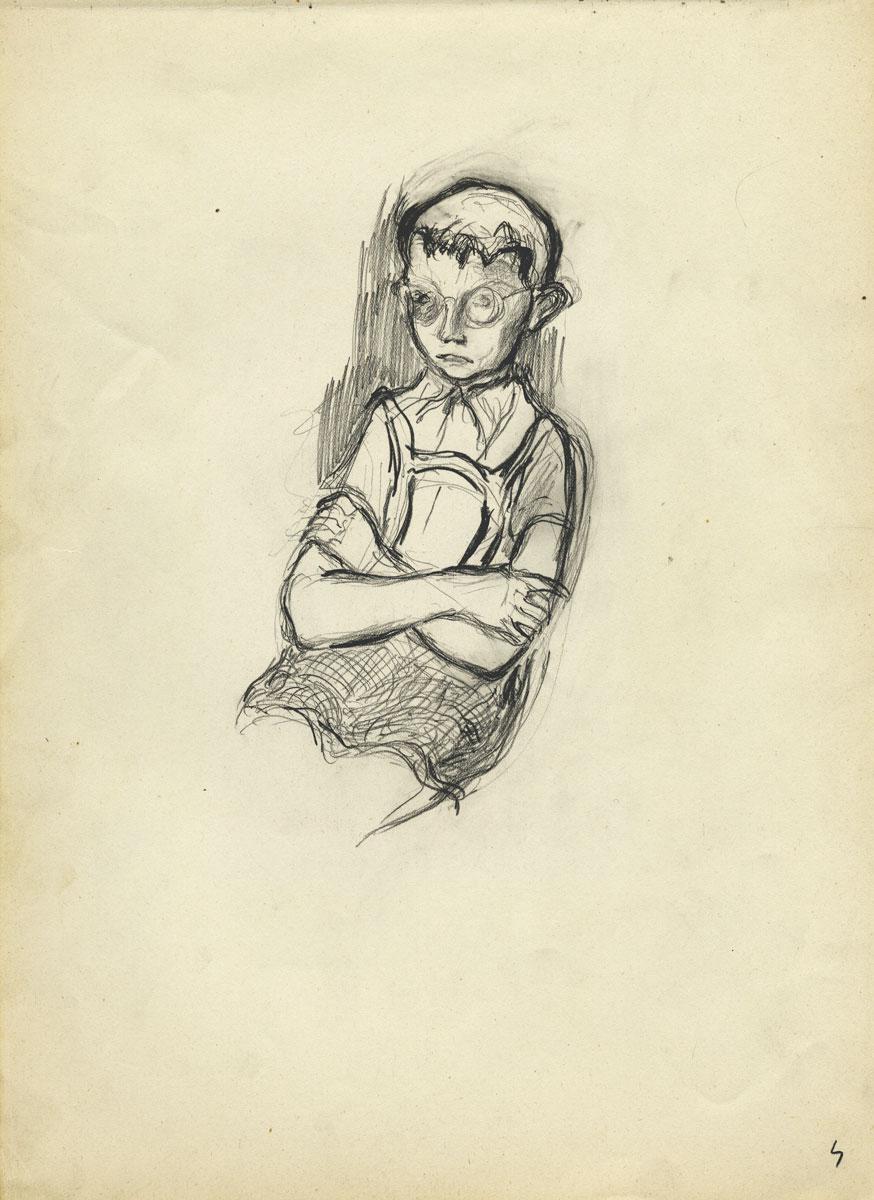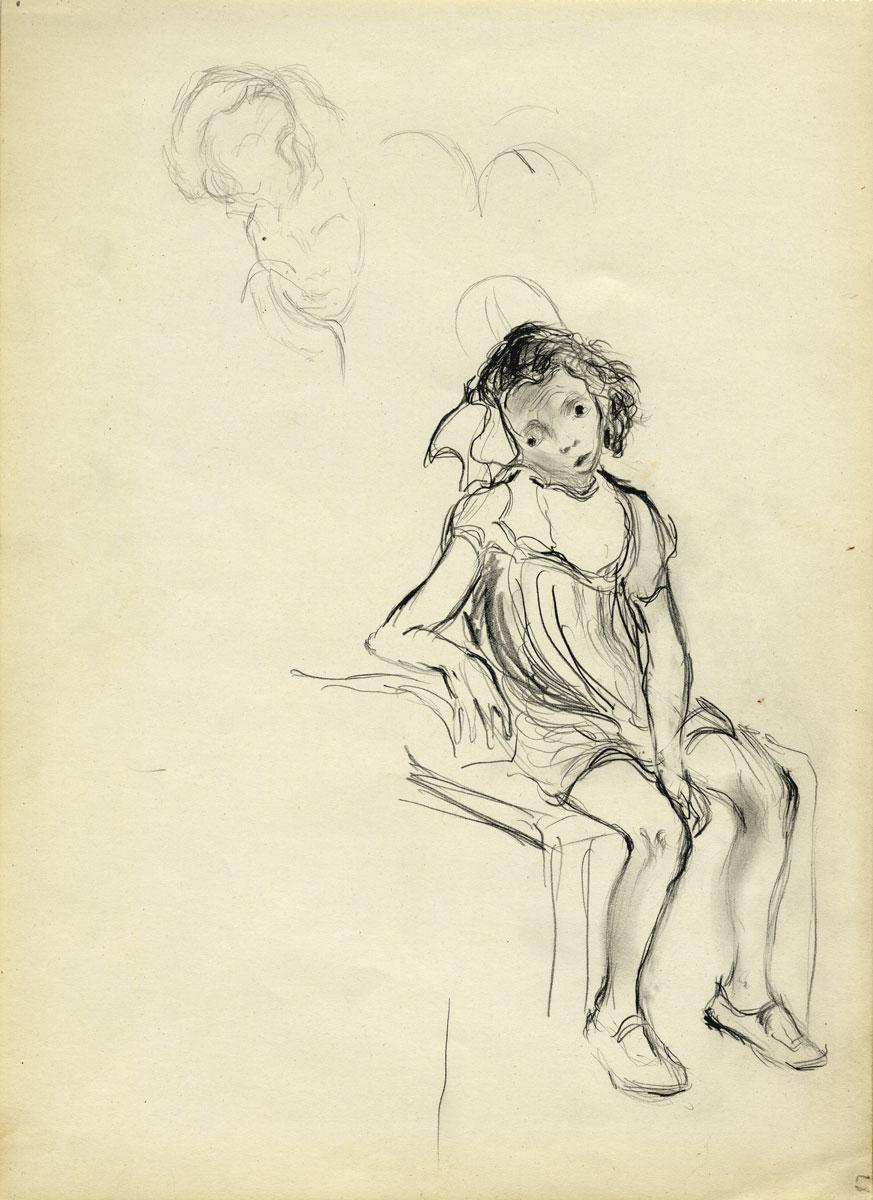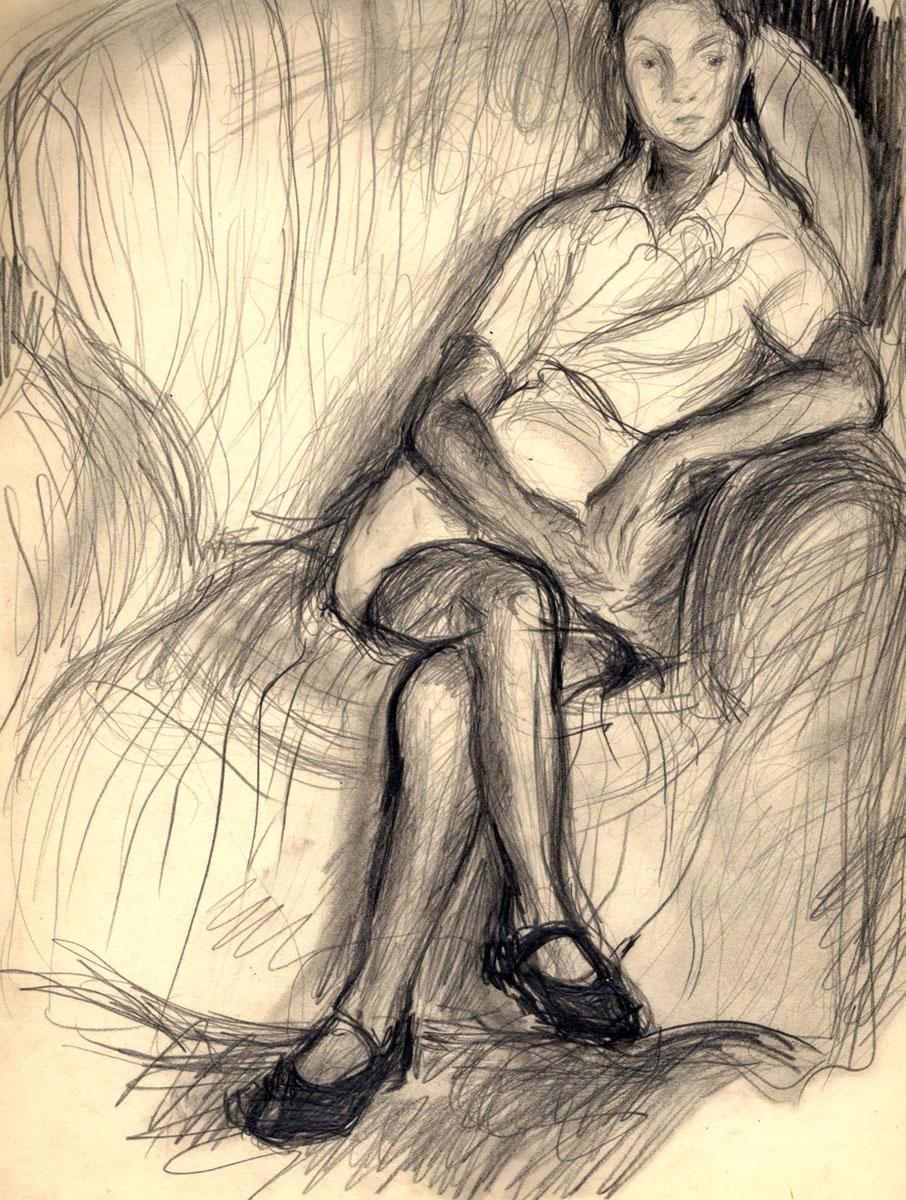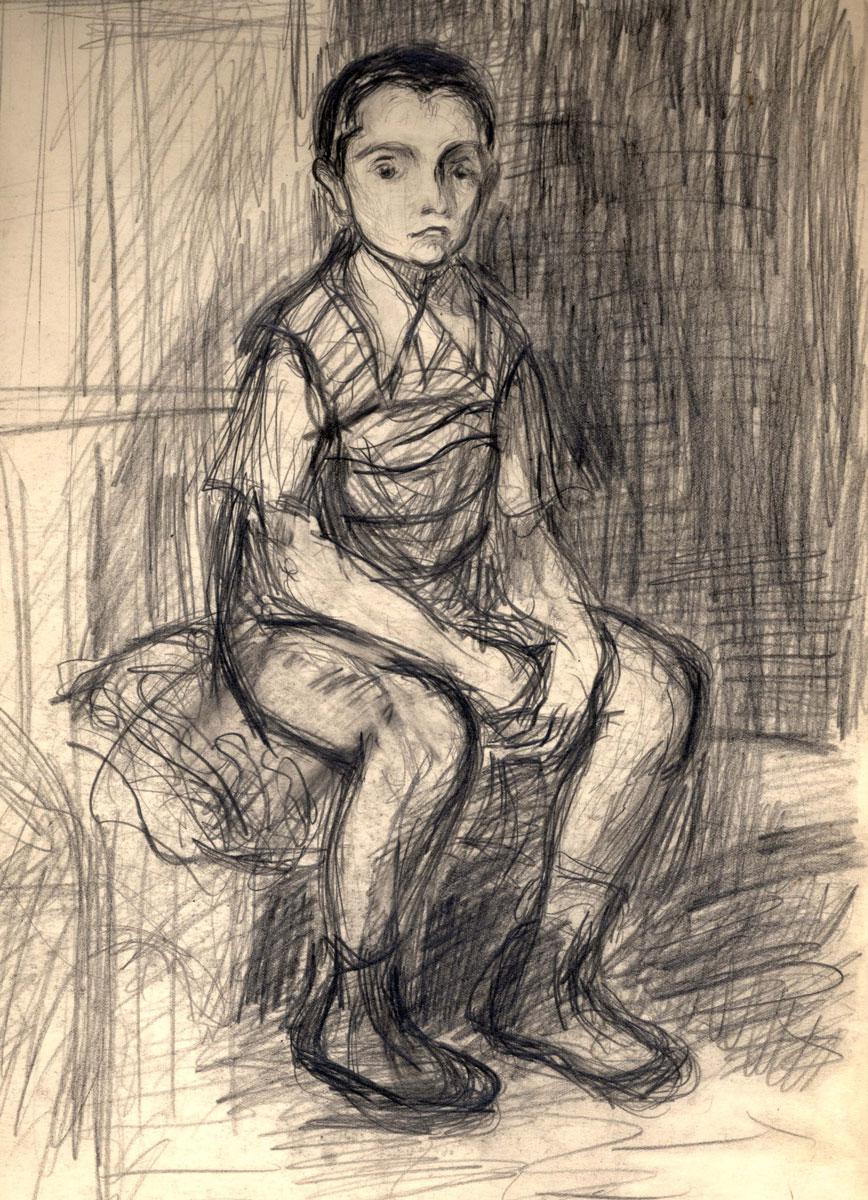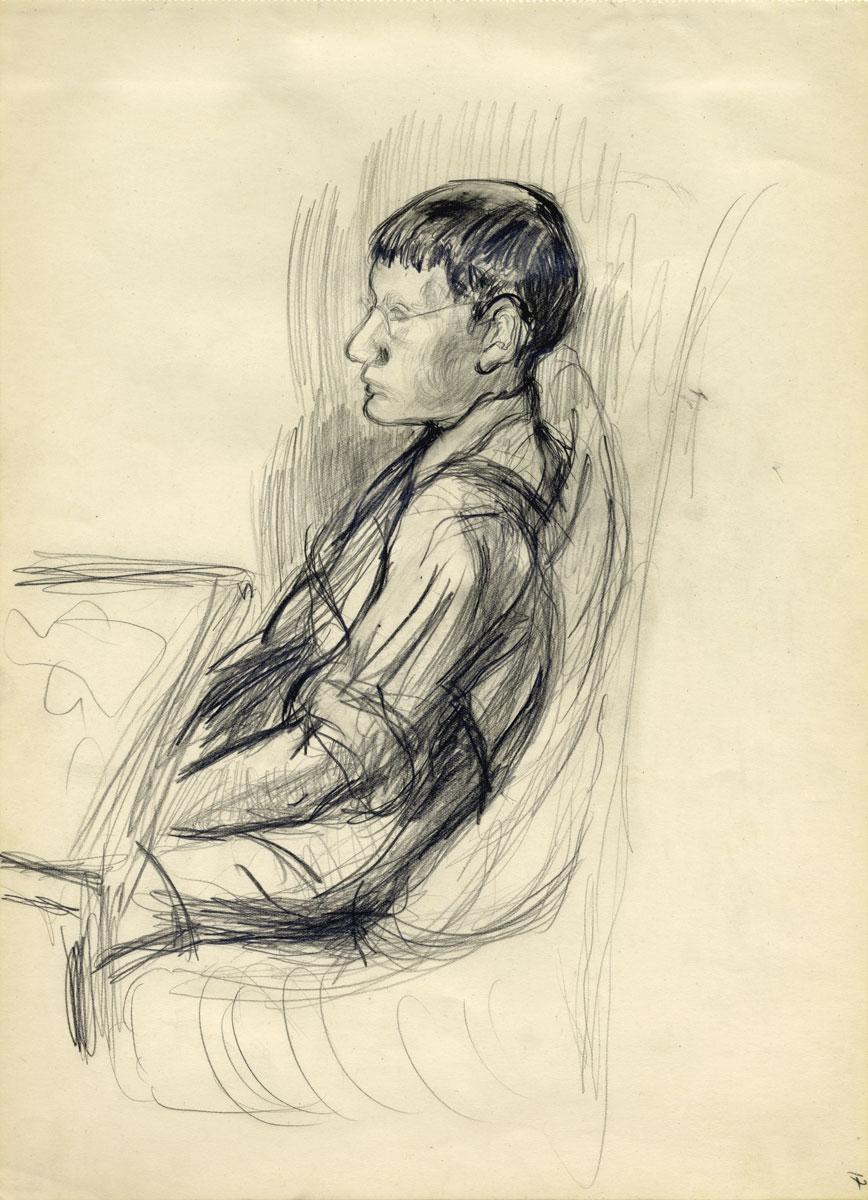Gedő came from a family of intellectuals, and was surrounded by a circle of artists and writers. She studied art with private teachers; Tibor Gallé and Viktor Erdei. In 1940, her works were first displayed in an exhibition sponsored by the Hungarian Jewish Cultural Association [OMIKE]. Between 1942-1943, she studied art at István Örkényi-Strasser's private school. Following the German occupation of Hungary in June 1944, Gedő was interned in Yellow-Star houses and, in November 1944, she was deported to the ghetto. When she was summoned for transport eastward, one of the elderly in the community reported in her place. Thus she managed to evade the transports, and found refuge in the ghetto. With the liberation of Budapest on January 18, 1945 by the Red Army, Gedő came out of hiding, and began to study at the Hungarian Academy of Fine Arts. After six months, she was compelled to leave the academy, and studied in the evenings with the Hungarian Bauhaus artist Gyula Pap. In 1946, she married Endre Bíró, a biochemist. The couple had two sons. After a long hiatus from art, in 1968 Gedő resumed painting. In 1969, she went to Paris, where she lived for a year. Her works were displayed in many exhibitions in Paris and Budapest.
While living in the Yellow-Star house and in the ghetto, under extremely difficult conditions when water, food and medications were scarce, Gedő created numerous drawings of her surroundings, her friends, the elderly and the children. Her drawings, which document people wrested from their surroundings, reveal Gedő's sensitive and intimate rendering of the subjects, and convey their despair and weariness.
Yad Vashem holds more than 100 of Ilka Gedő's portraits in its collection.
In the exhibition “Last Portrait: Painting for Posterity”, Yad Vashem continues in its persistent endeavor to restore a face and a name to the victims of the Holocaust and tell their personal story. Despite our efforts, some portraits remain unidentified. If you have additional information about the portraits and/or artists that are part of this exhibition, please contact the Yad Vashem Art Museum staff.
